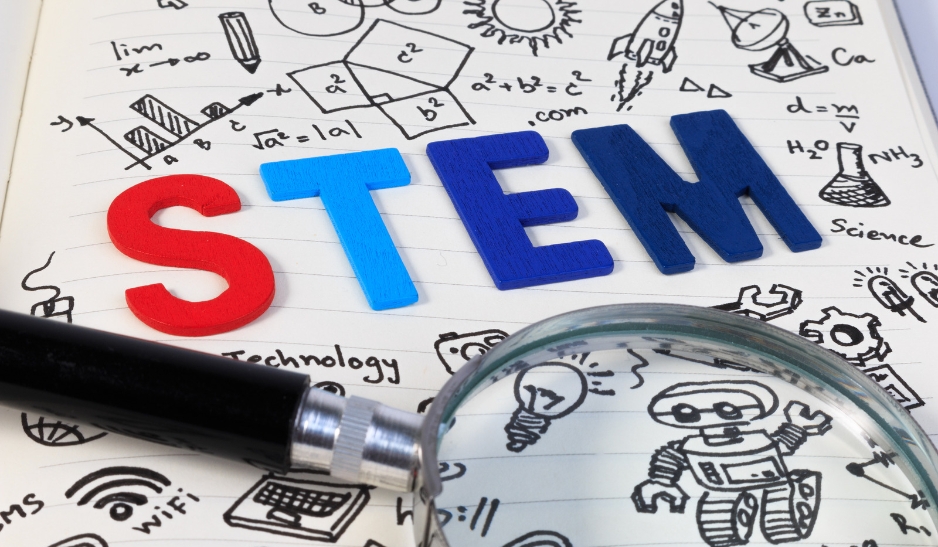Unveiling Hidden Benefits of STEM Education: What Makes It Worthwhile

Unveiling Hidden Benefits of STEM Education: What Makes It Worthwhile
In the tapestry of modern education, one acronym has emerged as a vibrant and transformative thread: STEM. This acronym—representing Science, Technology, Engineering, and Mathematics—has become synonymous with a forward-thinking, holistic approach to learning. As our world continues to navigate the twists and turns of the 21st century, the significance of STEM education cannot be overstated. It's become the fulcrum that balances the scales of traditional learning methods and the necessity for innovative, interdisciplinary education. The urgency to cultivate critical thinkers, problem solvers, and future innovators is more pressing than ever, and STEM education is a vital part of that process.
However, as we stand at the precipice of new learning paradigms, the focus has shifted from STEM to STEAM—Science, Technology, Engineering, Art, and Mathematics. The inclusion of Art underlines the importance of creativity and innovation in the learning process, acknowledging that the mind flourishes when it can leap across disciplinary boundaries and form connections that weren't apparent before. This evolution in our educational philosophy has brought with it a wealth of hidden benefits that are transforming the way children learn, innovate, and interact with the world.
The 'STEM' in Education and Emergence of STEAM
STEM education is a pedagogical approach that breaks down the traditional barriers between science, technology, engineering, and mathematics. It fosters a way of learning that underscores the interconnectedness of these disciplines, promoting an integrative approach that mirrors the reality of these subjects in the world and the workforce. Children in STEM programs are encouraged to explore these subjects in an applied, hands-on manner, facilitating a deeper understanding and appreciation of the material.
However, the emergence of STEAM education signals an even deeper commitment to interdisciplinary learning. The addition of 'Art' into STEM recognizes the essential role of creativity, design, and critical thinking in all fields, not just those typically associated with the arts. This evolution underscores the understanding that technical skills alone aren't enough in today's rapidly changing world. Equipping children with the ability to think creatively, visualize complex problems, and come up with innovative solutions is just as crucial. Thus, STEAM education not only enriches the learning process but also broadens the horizons of what our children can achieve.
Hidden Benefits of STEM Education
While the inherent academic benefits of STEM education are evident, some of its most profound advantages are less overt but equally important. First and foremost, STEM education helps develop critical thinking and problem-solving skills. STEM learning revolves around posing questions, defining problems, and developing logical reasoning skills. As students learn to perceive patterns, draw conclusions from observations, and understand the relationships between subjects, they cultivate a skill set that goes beyond textbooks, helping them navigate the complex world around them.
Furthermore, STEM education fosters creativity and innovation. Particularly in the case of STEAM education, the inclusion of arts encourages students to employ creative thinking and design skills. This capacity to invent and create, coupled with the technical skills offered by STEM subjects, prepares students for a vast range of future career paths. Equally valuable is the advancement of digital literacy through the use of various digital resources, a skill which in today’s digital age is of utmost importance.
The Importance of Early STEM Education
Introducing STEM education early in a child's learning journey has significant benefits. Children are naturally curious and inclined towards exploration and discovery. Implementing STEM education from an early age taps into this innate curiosity, turning it into a potent tool for cognitive development. The stimulating, hands-on nature of STEM learning helps to keep children engaged, making the learning process both fun and effective.
In the early stages of childhood, the brain is incredibly adaptable and open to new information. This neuroplasticity is a golden window of opportunity to expose children to the foundations of science, technology, engineering, and mathematics. The experience of actively engaging with these subjects helps to shape neural pathways, enhancing cognitive abilities, and setting the stage for more advanced learning as they grow. This formative exposure can foster a deep-seated love for these subjects, igniting a passion that can last a lifetime.
Moreover, early exposure to STEM education paves the way for future academic and career choices. It allows children to familiarize themselves with these disciplines, fostering an environment where young minds can envision themselves as future scientists, engineers, mathematicians, or artists. By placing STEM education within the grasp of children from the get-go, we demystify these fields, making them accessible, achievable, and inspirational. Importantly, early STEM education plants the seeds for lifelong learning, encouraging children to continually seek knowledge and understanding throughout their lives.

Real-world Applications of STEM Education
One of the most compelling aspects of STEM education is its practical, real-world application. STEM isn’t confined to abstract concepts or hypothetical situations but is deeply interwoven with our everyday lives. Students learn how mathematics underpins financial decisions, from budgeting to calculating interest rates, and how scientific principles explain the natural phenomena around us. They learn how engineering solves everyday problems, from designing efficient transportation systems to creating sustainable housing solutions.
Moreover, technology, an integral part of STEM education, plays an undeniably crucial role in our daily lives. Whether it's the smartphones we use, the apps that help us manage our day, or the digital platforms that keep us connected, technology is omnipresent. STEM education enables students to understand the underlying principles of these technologies, fostering a sense of curiosity and wonder about the digital world around them.
The Role of Parents and Educators in Promoting STEM Education
Parents and educators have a pivotal role to play in promoting STEM education. They serve as the guiding force, inspiring and encouraging children to explore these disciplines. Parents can integrate STEM learning in daily activities, such as cooking, gardening, or even household budgeting, helping children see the real-world applications of what they learn in school. They can also leverage digital resources to make learning interactive and enjoyable.
Educators, on the other hand, are essential in creating a classroom environment where STEM education can thrive. This involves designing engaging, hands-on projects that foster problem-solving skills, and encouraging a culture of questioning and critical thinking. Moreover, educators can make a significant impact by highlighting the contributions of diverse individuals in STEM fields, thereby broadening students' perceptions of who can be a scientist, engineer, technologist, or mathematician. Through these efforts, both parents and educators can ignite a lifelong passion for learning and discovery in the young minds they guide.
Conclusion
In our rapidly evolving digital world, STEM education is no longer just an educational trend—it’s a necessary shift in how we guide the future generation towards understanding and interacting with the world around them. The hidden benefits of this approach to learning are immense. By fostering critical thinking, leveraging digital resources, and promoting creativity, STEM education prepares our children for a future where these skills will be essential.
Ultimately, STEM education helps children view the world through a prism of interconnected disciplines, thus equipping them to solve complex problems and innovate in a rapidly evolving world. To help facilitate this essential learning journey, Curacubby is committed to supporting parents, educators, and students alike. As we navigate the demands of 21st-century education, Curacubby provides tools that streamline administrative tasks, freeing up more time for fostering an enriching and engaging STEM learning environment.









